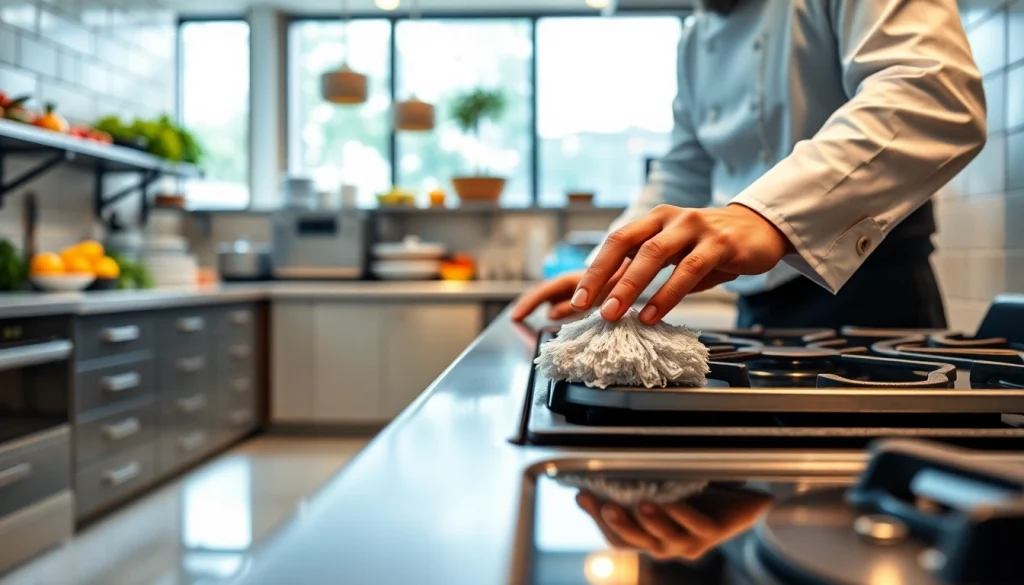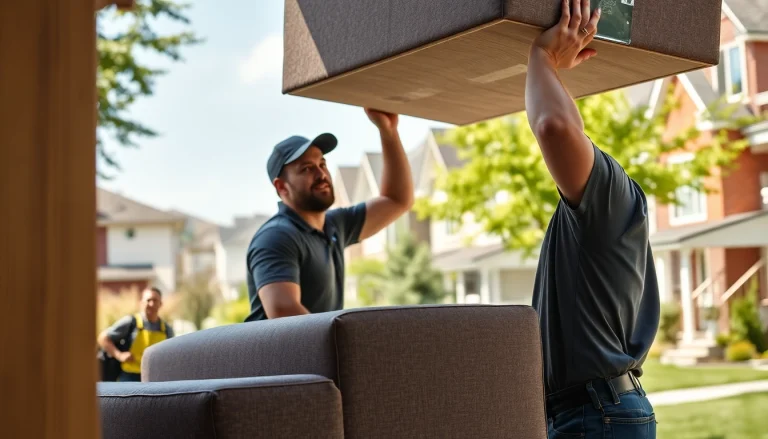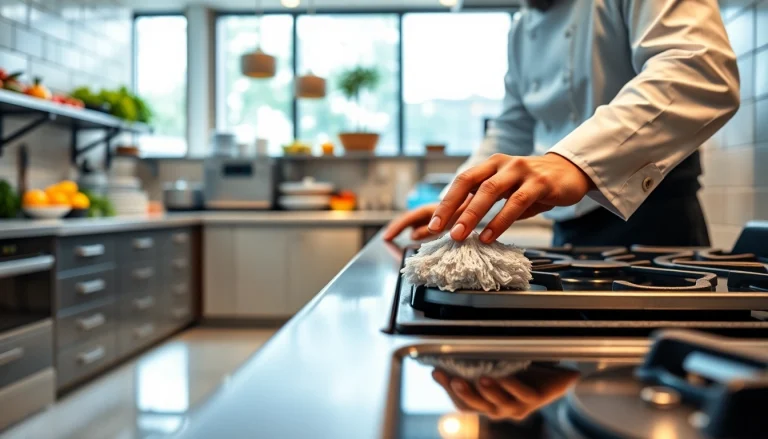
Maintaining a clean kitchen is a fundamental aspect of running a successful restaurant. One crucial yet often overlooked area is the process of Restaurant Cooking Appliance Cleaning. Regular cleaning of cooking appliances not only promotes food safety but also enhances the efficiency and lifespan of the equipment. This comprehensive guide will explore the importance, best practices, common challenges, scheduling, and effectiveness of cleaning restaurant cooking appliances.
Understanding the Importance of Restaurant Cooking Appliance Cleaning
The Impact on Food Safety
In the restaurant industry, food safety is of paramount importance. According to the Centers for Disease Control and Prevention (CDC), foodborne illnesses affect millions of people each year, and improper kitchen practices are often to blame. Dirty cooking appliances can harbor harmful bacteria, lead to cross-contamination, and increase the risk of foodborne outbreaks.
Regular cleaning eliminates food residues, grease, and bacteria that accumulate on appliances such as grills, ovens, fryers, and refrigerators. This proactive approach not only protects customers from potential illness but also upholds the restaurant’s reputation for quality and hygiene. Ultimately, a clean kitchen environment fosters customer confidence and satisfaction, which can translate into increased patronage and loyalty.
Boosting Appliance Lifespan
It is a well-known fact that the life expectancy of restaurant cooking appliances can be significantly affected by their maintenance and cleanliness. Frequently cleaned appliances are less likely to suffer from breakdowns, which can lead to costly repairs and replacements.
For instance, grime build-up can obstruct ventilation systems in ovens and fryers, causing them to overheat or work inefficiently. Regular cleaning not only helps in identifying potential issues before they become critical but also contributes to optimizing the overall functionality of the equipment. This means that over time, restaurants can save substantial amounts on repair costs and extend the life of their cooking appliances simply by adhering to a rigorous cleaning schedule.
Enhancing Operational Efficiency
A clean kitchen is an efficient kitchen. When cooking appliances are regularly maintained, they operate at their optimal performance levels, facilitating smooth preparation and cooking processes. Clean appliances heat up faster and cook food more evenly, reducing wait times and enhancing productivity.
Moreover, a routine cleaning schedule allows staff to efficiently allocate responsibilities and minimizes the potential for last-minute scrambles to clean equipment before peak hours. As a result, restaurant staff can focus on their core activities, serving customers and preparing high-quality meals, rather than dealing with unwanted disruptions caused by malfunctioning or dirty appliances.
Best Practices for Restaurant Cooking Appliance Cleaning
Daily Cleaning Routines
Establishing daily cleaning routines is critical for maintaining hygiene in a restaurant kitchen. These routines should encompass all cooking appliances that are in frequent use. Ideally, cleaning should be performed at the end of each shift to ensure that all appliances are ready for use the following day.
Common daily cleaning tasks include:
- Wiping down surfaces of grills, stovetops, and fryers post-use.
- Emptying and cleaning fryer oil baskets and residue traps to prevent grease buildup.
- Cleaning the exterior surfaces of ovens and hoods to minimize grease drips and stains.
- Sanitizing handles, knobs, and control panels to reduce the risk of cross-contamination.
Weekly Deep Cleaning Techniques
While daily cleaning is essential, weekly deep cleaning is equally important to maintain hygiene and appliance efficiency. Certain areas and appliances need an in-depth cleaning to prevent the accumulation of grease and dirt that a daily wipe-down may not address.
Weekly cleaning tasks may include:
- Deep cleaning the interiors of ovens and grills to remove carbon build-up.
- Flushing out refrigerator and freezer drains to prevent clogs and minimize smells.
- Cleaning the inside and outside of the microwave, ensuring no food remnants are left behind.
- Descaling dishwashers as mineral deposits can impact their performance.
Choosing the Right Cleaning Supplies
Selecting appropriate cleaning supplies is critical in ensuring effective cleaning without damaging the equipment. Restaurant environments require strong yet non-toxic and food-safe cleaning products. Some recommended cleaning supplies include:
- Degreasers for breaking down tough grease.
- Non-abrasive scrubbers to prevent scratching surfaces.
- Sanitizers that are approved for food contact surfaces to eliminate bacteria.
- Microfiber cloths that effectively pick up dirt without leaving lint.
Additionally, it’s important to provide staff with proper training on the use of these supplies to maximize their efficiency and ensure safety.
Common Challenges in Restaurant Cooking Appliance Cleaning
Stubborn Stains and Grease
One of the most significant challenges in cleaning restaurant cooking appliances is dealing with stubborn stains and grease that can accumulate over time. A layer of grease can not only affect the appliance’s appearance but can also contribute to poor hygiene if not addressed properly.
To effectively tackle these issues, implement a combination of regular cleaning and specialized products designed for tough stains. Hot water and steam can also be effective tools for breaking down hardened grease. Consider scheduling a professional deep cleaning service if in-house efforts are failing to achieve the desired results.
Time Management Tips
In a busy restaurant, time is of the essence, which can sometimes lead to neglecting cleaning tasks. To address time management concerns, consider the following tips:
- Develop a cleaning schedule that aligns with operational hours, ensuring cleaning tasks fit seamlessly into staff routines.
- Assign specific roles to staff members, distributing cleaning responsibilities to prevent overwhelming any single individual.
- Utilize downtime, such as slow service periods or after hours, to perform deeper cleaning tasks or to tackle larger appliances.
By effectively managing time, restaurants can maintain cleanliness without sacrificing quality service.
Employee Training for Best Results
Even with the best cleaning supplies and routines, cleaning efforts can fall short without proper employee training. All staff members should be trained not just on how to clean but also on why these practices are vital for food safety and overall kitchen success.
Regular training sessions should cover cleaning techniques, the importance of equipment maintenance, and best practices for minimizing cross-contamination. Engage team members through workshops and refreshers that reiterate the importance of their roles in upholding kitchen hygiene.
Implementing a Restaurant Cooking Appliance Cleaning Schedule
Creating a Cleaning Checklist
A well-structured cleaning checklist serves as a blueprint for maintaining cleanliness in a restaurant’s kitchen. This checklist should detail all cooking appliances and surfaces that require regular cleaning, alongside frequency guidelines (daily, weekly, monthly).
In addition to listing out equipment, the checklist should include:
- Designated staff members responsible for each task.
- Space for notes or comments to inform managers of any issues or additional needs.
- Dates of last cleanings to track compliance and create accountability.
Using Technology for Reminders
Incorporating technology into daily operations can significantly enhance compliance with cleaning schedules. Many restaurants could benefit from the use of digital tools to set reminders for daily and weekly cleaning routines. Some options may include:
- Mobile apps that allow staff to check off cleaning tasks as they’re completed.
- Automated notifications tied to kitchen operations digital platforms.
- Calendar apps that schedule reminders for deeper cleanings and inspections.
Effective use of technology can create a visual cue for team members, ensuring cleaning tasks remain a priority.
Monitoring and Adjusting Cleaning Practices
Finally, continuously monitoring cleaning practices and adapting them whenever necessary ensures that the standards of cleanliness are consistently high. Regular audits can be conducted to evaluate the effectiveness of cleaning processes. Consider the following:
- Seek feedback from kitchen staff about the efficiency of current practices and any suggested improvements.
- Adapt cleaning techniques and products based on the unique challenges presented by specific equipment or changes in menu items.
- Encourage openness in communication so that staff can raise concerns about cleanliness and maintenance promptly.
By remaining flexible and responsive to changes in the kitchen environment, restaurants can ensure their cleaning practices are both effective and manageable.
Measuring the Effectiveness of Cleaning Practices
Tracking Appliance Performance
To gauge the success of the restaurant cooking appliance cleaning routines, tracking the performance of cooking equipment is essential. Metrics to monitor may include:
- Energy efficiency of appliances—clean appliances tend to operate at optimal energy levels.
- Frequency of repairs needed—an increase in breakdowns may indicate poor cleaning or maintenance.
- Time taken for appliances to reach operating temperatures, which can reflect how well they are maintained.
Routine tracking can help identify trends over time and enable adjustments where necessary.
Collecting Staff Feedback
Soliciting feedback from staff is invaluable for fine-tuning cleaning practices. Employees who engage in cleaning regularly possess insights into the practical aspects of cleaning routines. Consider implementing:
- Anonymous surveys to encourage honesty in feedback regarding cleaning processes.
- Periodic meetings to discuss challenges faced in maintaining cleanliness and appliance performance.
- Suggestion boxes for staff to propose innovative cleaning solutions or improvements.
By integrating staff feedback, managers can make informed decisions to optimize cleaning tasks and foster a culture of accountability.
Conducting Regular Inspections
Inspections are a practical way to assess the effectiveness of cleaning practices. Establish a routine of conducting inspections based on a set schedule, whether weekly or monthly, focusing on aspects such as:
- Hygiene levels of cooking appliances and surfaces.
- The condition of the equipment overall—looking for signs of wear or damage.
- Compliance with the established cleaning checklist by reviewing completed tasks.
Regular inspections serve not only to measure cleaning effectiveness but also to reinforce the importance of hygiene and maintenance among restaurant staff.





